
10 Of The Biggest Social Media PR Disasters.
September 6, 2011This is not a top ten list. This is not a countdown. You can’t really try to rate something as detrimental as a social media PR nightmare, because each disaster is just as much of a mess as the next and either way the damage is done until management comes up with a campaign to redress their image.
One thing about the internet, it’s much like bad Facebook photos. Sooner or later, your internet activity can come back to haunt you. So don’t think of this list as a countdown. Think of this as a checklist of what not to do for businesses.
1 Rats in the Taco Bell-February 2007
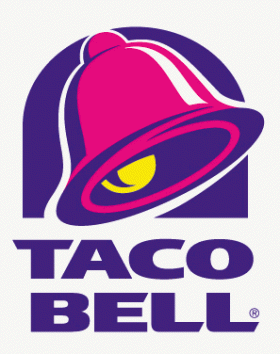
What were they hoping to film, you ask? The assembly line of tacos? A special piece about the employee of the month? Unfortunately for the Bell, none of the above. The guest on this particular live feed was not human nor an employee, at least not a paid employee. The special that day focused on rats. Now one rat would have been bad enough, but it wasn’t just a single misplaced rodent. The film crew that day caught footage of dozens of rats scurrying all over the floor of the restaurant, scattering across the floor, climbing over the tables where people sat and ate, and, even worse, in the back where the food was prepped.
And it was broadcasted live.
Taco Bell’s and KFC’s all over were slammed with heaps of health code violations and Yum Brands, the mother company that owns the chicken and tacos, were ordered to clean up their restaurants or risk being shut down for good. All of this on the tail end of an E. coli scandal which sickened several people back in 2006. Stocks took a serious tumble for Yum Brands, and Taco Bell is still recovering even a few years later.
2 The Whole Foods Blog-July 2007
Whole Foods is known across the states as a Safeway of sorts for the organic and natural food industry. They have been happy to take up flags supporting the green movement, providing recycled and reusable bags to patrons, and advertising themselves as supporters of healthy living. But, like any other major food company or provider, there is competition in the field of healthy living and organic farming. So the company chief came up with a great idea to increase consumerism and productivity: assume an internet identity named “rahodeb” and troll forums and review boards of his main competitors and publish bad (i.e. false) reviews of their products.
Now that’s a great idea when you’re a kid still living in your parents basement with no ambitions and nothing to lose trolling that guy who keeps beating you on your Ebay auctions; not so great when you are the C.E.O. of a multi-million dollar corporation and the Federal Trade Commission files a lawsuit.
It turns out Mackey had been up to this “rahodeb” business from about 1999, haunting food blogs and the reputation of several companies and raised a few government eyebrows in the process, because “rahodeb” had a lot of bad things to say, none of them about Whole Foods. It really got suspicious when “rahodeb” made a thinly veiled prediction about the buyout of a competitor, Wild Oats, by Whole Foods that eventually came true a month later. Mackay resigned from his chairman position in 2009.
So if you find yourself trolling review boards trying to find the right stuff for organic, healthy living, and you see the name “rahodeb”, remind yourself that healthy living also requires a clear conscious and pure business ethics.
3 Belkin’s “Positive” Review-January 2009
Alan Parsa was studying for his degree in documentary film making from Chicago’s Columbia College. Like any normal college student today, he needed a little extra cash in his pocket, so he went cruising on Amazon.com’s Mechanical Turk for a quick buck or two. He clicked on a link to a possible job and imagine his surprise: there was an ad to get paid, provided he write a 5/5 positive review for any of Belkin’s products. With his internal bells and whistles going off that this probably wasn’t an honest thing to be paid for, Parsa did what any self-respecting internet person does: blog about it.
In just a few hours, the story broke across the internet. Belkin was very slow to reply to request’s for personal comment, which gave plenty of time for the Belkin hate wagon to pick up steam and really get rolling. By the time Mike Reynoso, Belkin’s president, posted an apology, the damage was too far gone and The New York Times had grabbed the story. People were quick to boycott Belkin products soon after and really, aren’t bloggers the last people you want to piss off when you are in the market of producing internet equipment?
4 Domino’s Falling-April 2009
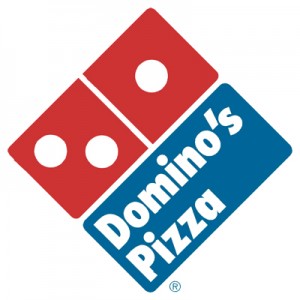
Kristy Lynn Hammonds (31) and Michael Anthony Setzer (32) at Domino’s Pizza in North Carolina apparently didn’t get the memo. Late one night, and probably not in their right minds, the dynamic duo taped themselves sticking their hands in prep stations, shoving cheese in their noses, waving meat by their (ahem!) rears, and performing an array of other juvenile antics with the produce in the back of the store. What was meant as a prank video gained more than one million viewers within a few days and spread rumors of poor management and business ethics on Domino’s Pizza’s part. The Domino’s employees were, of course, fired, and consequently brought up on felony charges.
5 There’s A Comcast Technician on My Couch- June 2006
Brian Finkelstein needed some technical help with his Comcast modem, so he called the cable company and asked they send a man over. The technician arrived awhile later…and promptly fell asleep on Finkelstein’s couch. Maybe he was out too late partying, maybe he was too worn out from night classes. But instead of doing his job, the tech decided his beauty rest was more important than attending to the original problem he had been sent out there for.
Annoyed and irritated that his modem was still not working and certainly wasn’t going to get fixed on its own, Finkelstein broke out the camcorder and recorded the tech asleep. After some careful editing and cutting the film to “I Need Some Sleep” by Eels, the D.C. resident uploaded the video onto—you guessed it—Youtube. The fifty-eight year old employee was fired but too little too late. People were already climbing out of the woodwork to make their own comments about Comcast’s poor customer service and low quality technology. Apparently a sleepy technician was only the latest in a long line of complaints, but this was the one to finally get the ball rolling downhill all over Comcast’s public image.
6 “Dell Lies; Dell Sucks”- June 2005
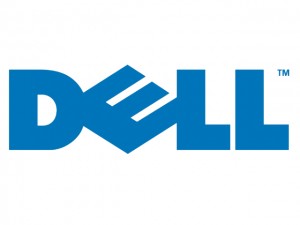
Who didn’t read the blog? Anyone and everyone at Dell.
Lesson learned here: follow up on what the customers have to say about your products before you find yourself in the middle of an internet firestorm and not even realizing it.
7 Johnson and the Red Cross-August 2007
You hear the name Johnson & Johnson and you think of the tear free shampoo, or the tagline “a family company”. You think of fresh smelling babies or dish soap that leaves your hands feeling smooth You think of the Red Cross, you think of relief efforts in Louisiana for Hurricane Katrina and first aid. So why should these two good natured well effort companies have anything against each other? For Johnson & Johnson, it was what the two companies had in common that was the problem: the iconic red cross.
The way it goes is this: the family company, Johnson & Johnson (J&J), filed suit on August 7, 2007 for copyright use of the red cross which appears on first aid kits and other various products that J&J claimed competed against their own first aid line. The family company wanted all paraphernalia with the cross emblem destroyed and for the American Red Cross to pay punitive damages for dollars lost and legal fees for filing the suit which was their idea in the first place. Red Cross argued its name was licensed to first aid kit makers to advertise readiness for disasters. J&J threw around words like “violation of federal statutes” and went on to insist that the commercial Red Cross went outside the span of historically well-agreed use of the image.
Never mind the fact that the so-called “family company” was attempting to sue one of the most well known and charitable humanitarian corporations in the world, but here are a few facts that came to light that doomed J&J’s case. First of all, the American Red Cross was founded in May 1881; Johnson & Johnson didn’t start using the cross image until 1887. Second, the American Red Cross founder, Clara Barton, had already signed a deal J&J in 1895 that recognized the company’s use of a red cross as the trademark for chemical, surgical, and pharmaceutical goods.
A judge ruled against Johnson & Johnson’s case on May 14, 2008. In June of the same year, both companies agreed that both could have access to the trademark red cross image and everyone has been pretending like it’s never happened, like a bad drinking binge.
8 United Airlines Guitar Non-Hero-July 2009
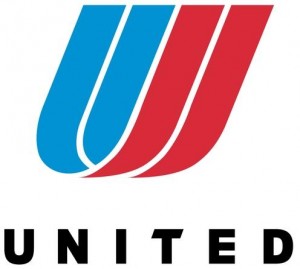
Baggage handling is notoriously sketchy, but Dave Carroll, a country singer from Canada (there’s a few words you never thought would go together) added a lyrical quality to it. In 2008, Carroll was flying on United Airlines from Chicago’s O’Hare Airport. He and several other members of his band, Sons of Maxwell, witnessed the baggage handlers literally throwing their guitars around on the tarmac. Carroll’s own guitar, a $3,500 Taylor, was badly damaged to the point he couldn’t even play it.
Carroll fought for almost a year trying to get United Airlines to take responsibility for the damage they had caused. When that didn’t work, he took the Youtube route, writing a song and directing music video detailing his woes with the airline. Nine million views and one iTunes track later, United Airlines was running damage control, apologizing through Twitter and offering to replace Carroll’s guitar. The Canadian instead requested they donate their money to the Thelonious Monk Jazz Institute. United gave a total of $3,000 but there has been no word yet on whether this has had any impact on how baggage handlers handle your valuables.
9 Chrysler All A-Twitter- March 2011
“I find it ironic that Detroit is known as the motorcity and yet no one here knows how to (expletive) drive.”
No, this wasn’t posted by someone riding the coattails of afternoon rush hour road rage. Believe it or not, the tweet came from someone who worked for Chrysler Group LLC automotives in Detroit, Michigan. Now you might start bemoaning any person should be allowed to openly vent on their own Twitter log. Free speech, the first amendment, personal expression, all of that applies, and it certainly does. The problem is the off-brand topic expletive tweet was listed on Chrysler Automotives own Twitter feed.
Whoops.
The irony of the situation is the tweeter was actually employed by New Media Strategies, a company there to specifically serve Chrysler’s social media needs, i.e. reach a new audience through current social media networks. Chrysler was quick to release a statement that said the company would not tolerate such language or behavior. The worker was fired, the expletive tweet was deleted, and Chrysler dropped NMS.
10 Asus Kissing- July 2009
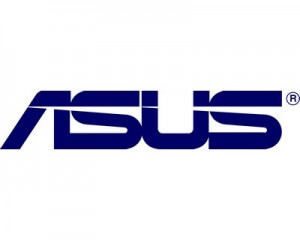
For some reason, Asus did not approve and oh so intelligently and diplomatically announced a decision to change the rules right at the end of the contest, proclaiming a new winner through new voting polls which did not include the popular vote which was initially what would decide the outcome.
Within a week, Asus was flooded with complaints and understandable outrage at this turn of events. Many who had participated in the contest felt used like cheap whores. They accused the Taiwanese company of manipulating the system and the voters for their own benefit and gain with little to no cost for the company. The story picked up mainstream attention but Asus was reluctant to admit any wrong doing on their part. They insist there was no intention to mislead the public, but little has been done in the PR department to effectively rectify the situation and the computer company’s reputation remains bruised.
Here’s an idea: when you write out the guidelines for a competition, you stick to the way they’re written instead of trying to backtrack at the very last second.